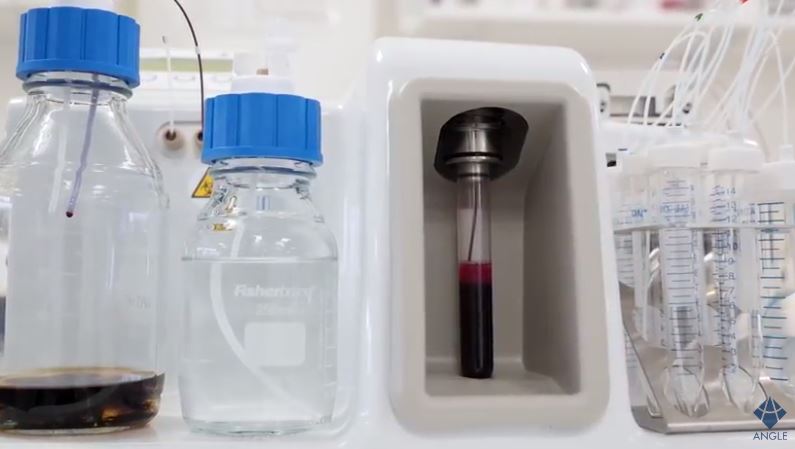Liquid biopsy-based system could prevent cancer from spreading

Angle’s liquid biopsy system has been used in new cancer research that could provide a novel way to treat breast cancer and other tumours, by stopping or suppressing their spread from the original site.
Research from the University of Basel, published in the journal Cell, showed the system dubbed Parsortix is able to harvest intact metastatic circulating tumour cell clusters (CTCs), which cause cancer to take hold in other parts of the body.
These are groups of cancer cells and other cells tethered together as a single mass, and could be used as a guide for further drugs that scientists believe would suppress the spread of the disease.
Patients identified as having CTCs could be treated with repurposed FDA approved drugs, which have been shown in mouse models to break up the clusters and suppress metastasis.
The research led by Professor Nicola Aceto at the university’s Cancer Metastasis Laboratory showed that animals treated in this way showed 80 times less metastasis compared with untreated animals, with the spread of disease virtually eliminated in the treated animals.
The development of metastasis, the spread of cancer to distant sites primarily via the blood, is responsible for more than 90% of all cancer-related deaths.
Previous work has shown that CTC clusters in the blood are highly metastatic causing greatly increased spread of the disease. If metastasis could be suppressed by disrupting CTC clusters then patient outcomes could be dramatically improved.
There are a variety of technical challenges to capturing intact CTC clusters from patient blood, which has historically led to problems with other CTC systems and an inability to effectively research CTC clusters.
In controlled tests with spiked samples, Basel demonstrated that the Parsortix system used with a specialised protocol overcame these technical challenges and was able to successfully isolate more than 99% of CTC clusters from a simple blood test.
After showing they are able to investigate CTC clusters using the system, and identifying previously unknown mutations in them that make them highly likely to spread cancer, the researchers searched through nearly 2,500 compounds already approved by the FDA that could cause the clusters to break.
They found a small number of drugs that could do this, and found that targeting the CTCs in this way caused them to lose their high metastatic potential.
The drugs used to target CTC clusters are not conventional chemotherapies with their unpleasant side effects, and also do not give rise to drug-resistant cell populations that can lead to disease relapse.
The drugs used for the CTC cluster dissociation are already approved by the FDA for different non-cancer indications and do not have the typical side effects of chemotherapy or immunotherapy.
Researchers from Basel have applied for ethics approval to begin a clinical trial in 2019 utilising the Parsortix system as a companion diagnostic to identify which patients have CTC clusters and may respond to the identified drugs. The first area of focus is in breast cancer, which complements Angle’s ongoing FDA studies in metastatic breast cancer.
Professor Aceto said: “CTC clusters are extraordinarily important mediators of breast cancer metastasis, and discovering the first anti-cluster therapy may provide a new powerful tool to help treat millions of women currently living with this potentially fatal disease.”












